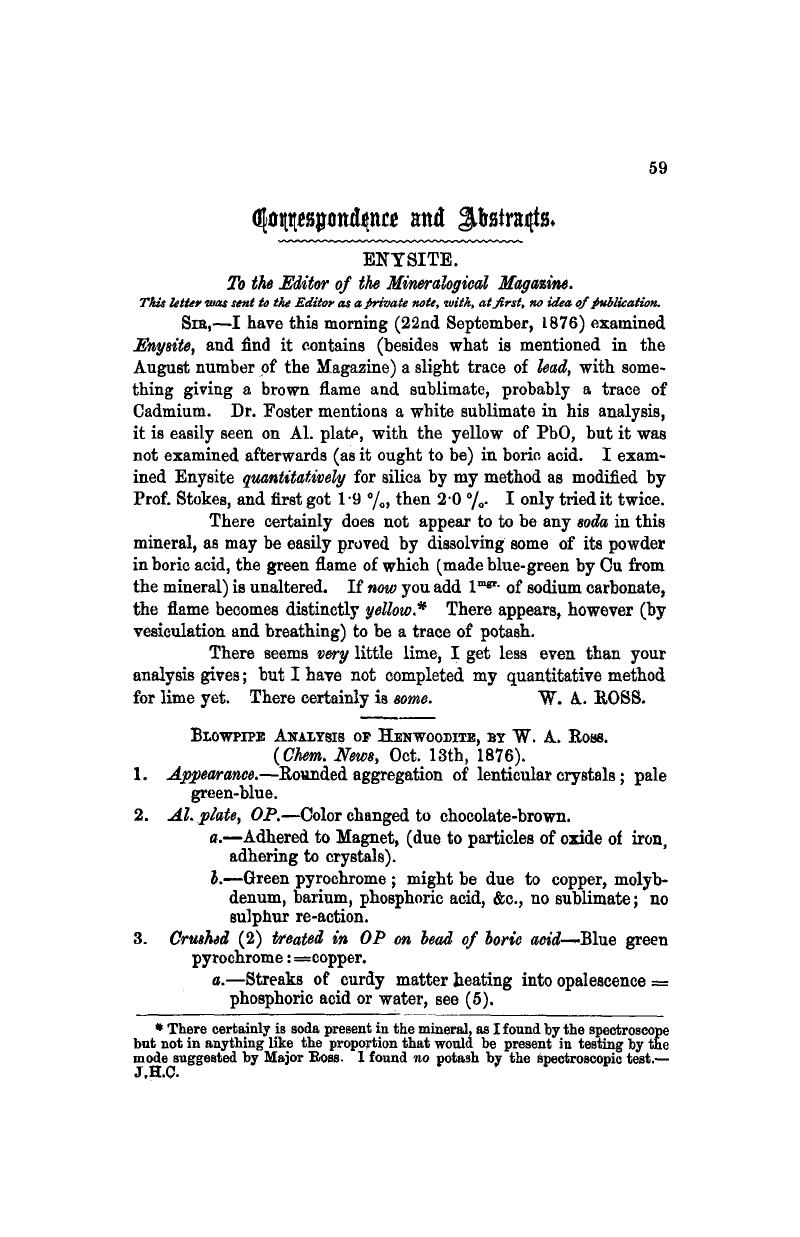No CrossRef data available.
Article contents
Correspondence and Abstracts
Published online by Cambridge University Press: 14 March 2018
Abstract

- Type
- Other
- Information
- Mineralogical magazine and journal of the Mineralogical Society , Volume 1 , Issue 2 , November 1876 , pp. 59 - 60
- Copyright
- Copyright © The Mineralogical Society of Great Britain and Ireland 1876
References
page 59 note * There certainly is soda present in the mineral, as I found by the spectroscope but not in anything like the proportion that would be present in testing by the mode suggested by Major Ross. I found no potash by the Spectroscopic test.— J.H.C.
page 60 note * Note by the author. Berzelius says (p. 84 Am. Ed) “The unexpected discovery of phosphoric acid in Wavellite, &c., has shown the necessity of a re-agent for this acid. Its known behaviour, in combination with the oxide of lead, induced me to attempt to discover some method of detecting its presence by the help of lead, or the oxide of b, ad, which, however, did not succeed, except in the case of phosphate of copper.”
He is quite right: the crystallization of plumbic phosphate is a very poor test for phosphoric acid, which cannot be detected half so delicately or cerrectly by any pyrogical method as that above given. I used lead oxide with the view of a metallurgical separationof copper, which is beautifully effected this way.—W.A.R.


